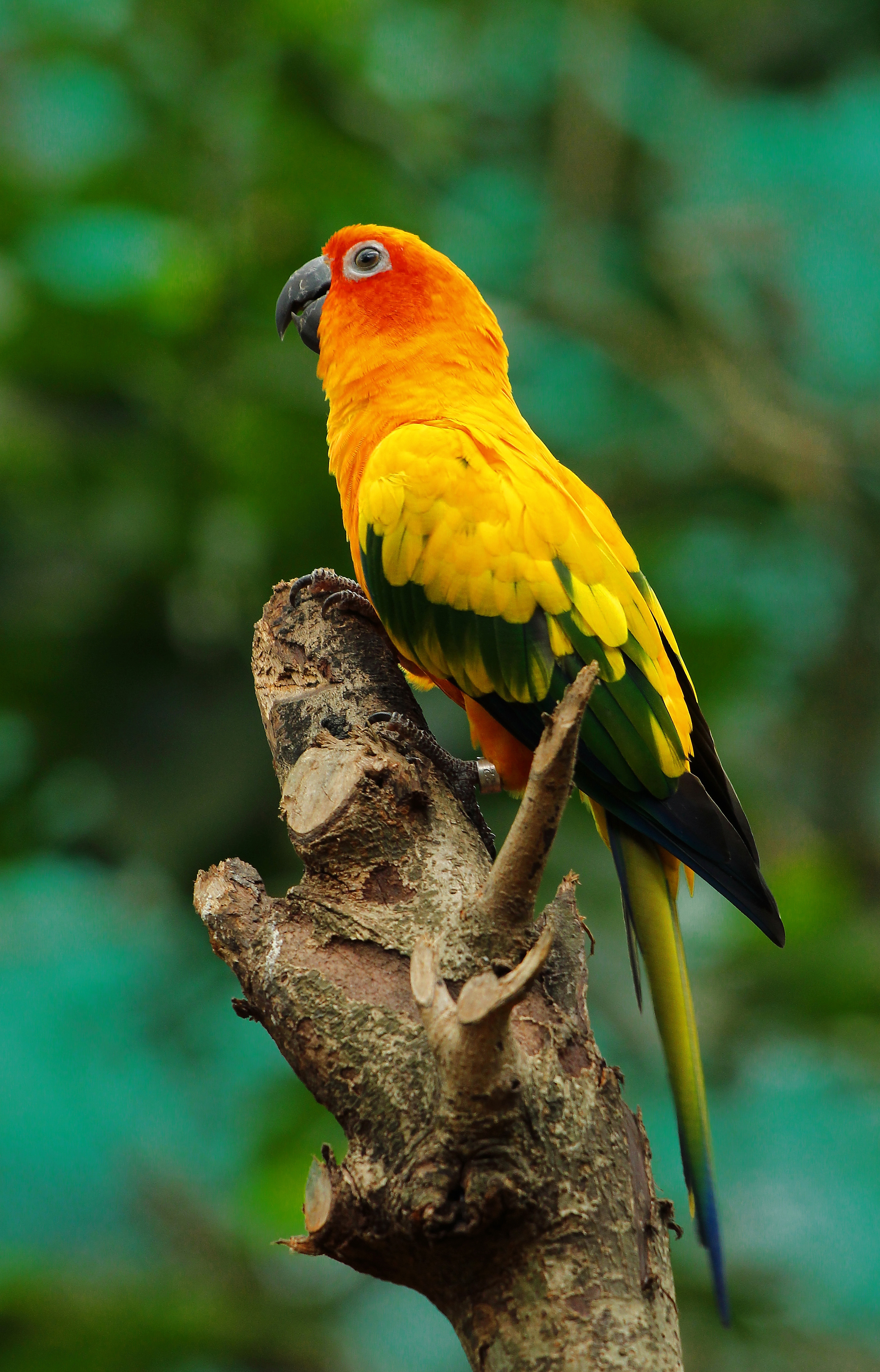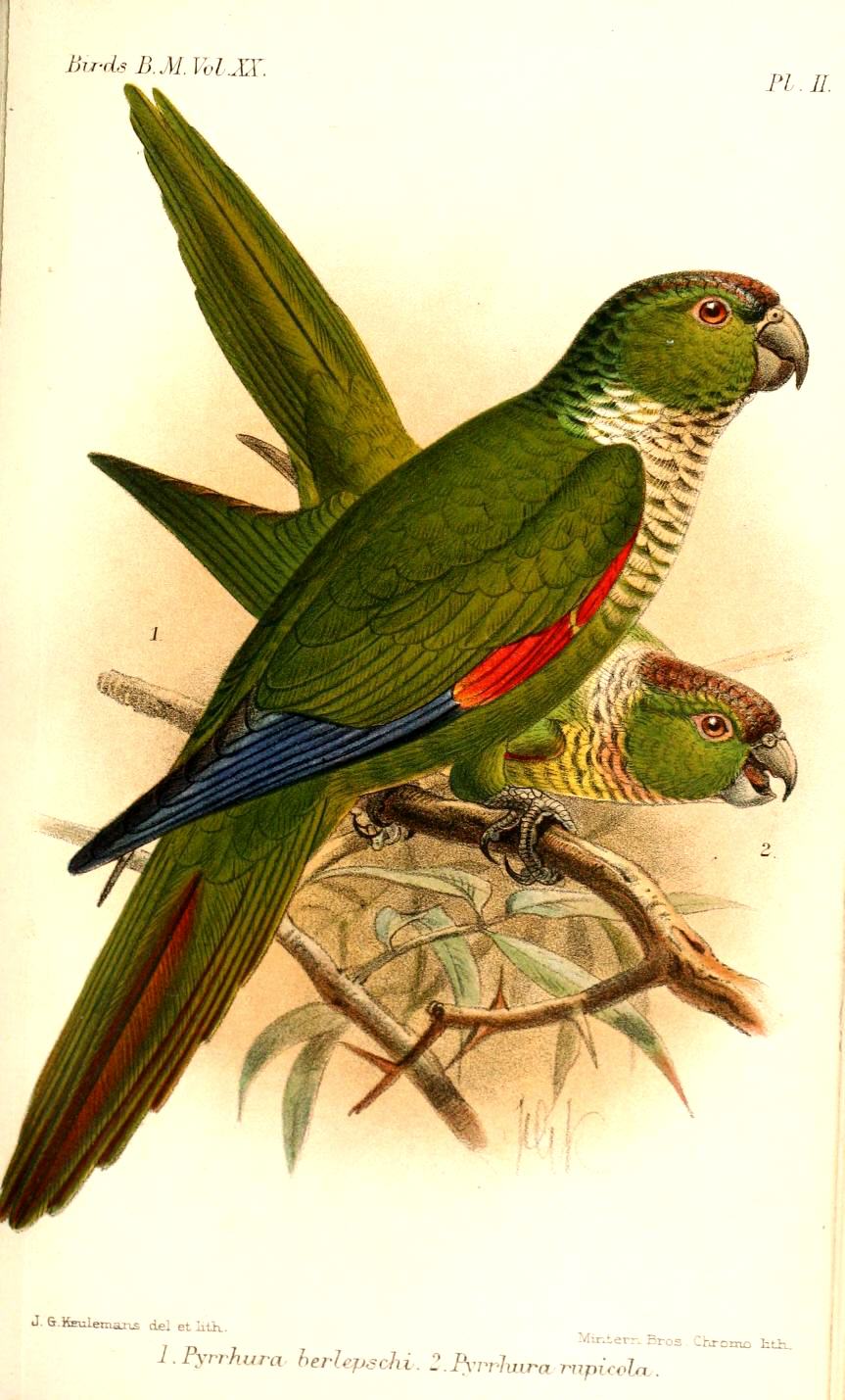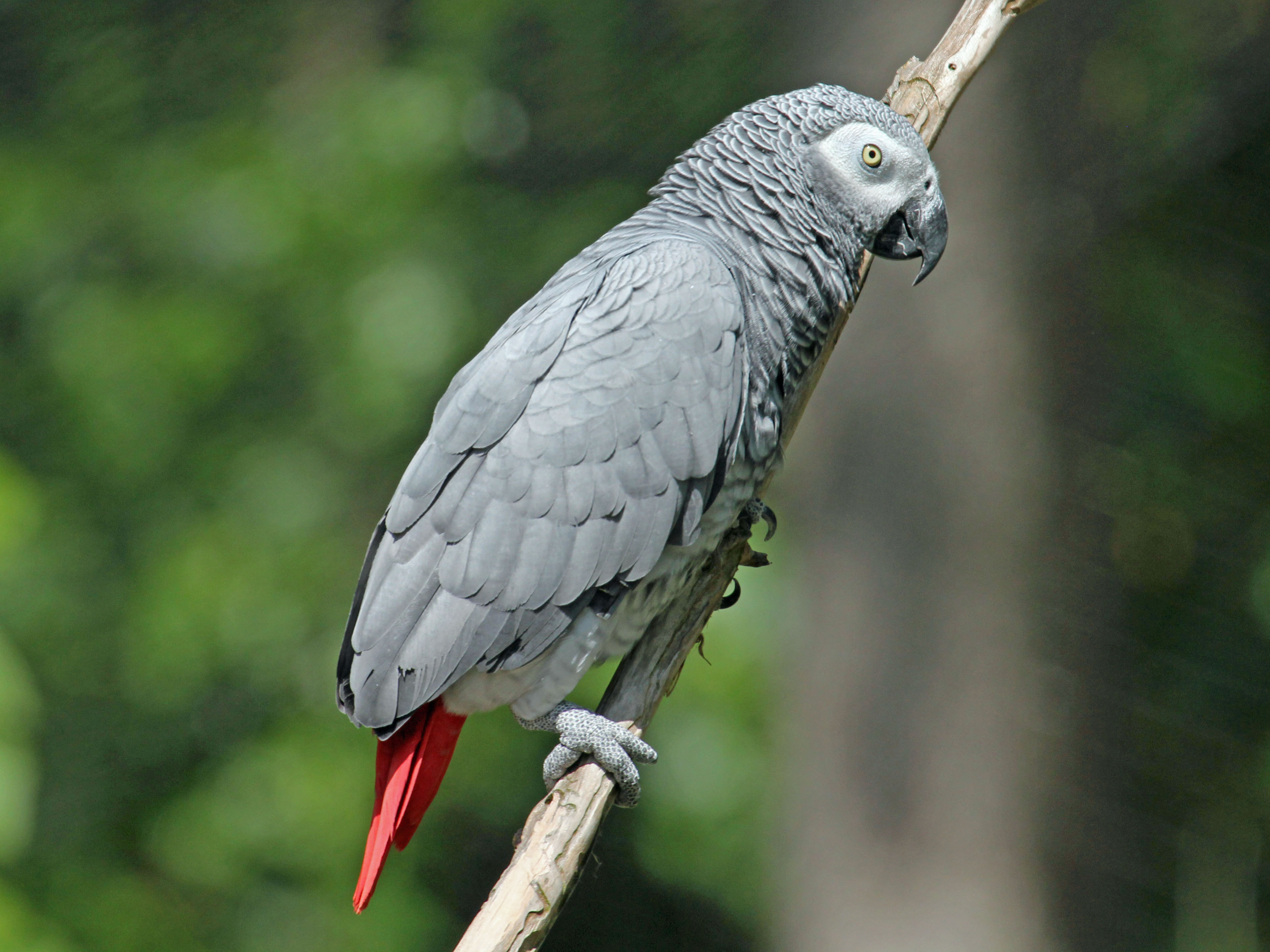|
Conurus
Conures are a diverse, loosely defined group of small to medium-sized parrots. They belong to several genera within a long-tailed group of the New World parrot subfamily Arinae. The term "conure" is used primarily in bird keeping, though it has appeared in some scientific journals. The American Ornithologists' Union uses the generic term ''parakeet'' for all species elsewhere called ''conure'', though Joseph Forshaw, a prominent Australian ornithologist, uses ''conure''. Description Conures are either large parakeets or small parrots found in the Western Hemisphere. They are analogous in size and way of life to Afro-Eurasia's rose-ringed parakeets or the Australian parakeets. All living conure species live in Central and South America. The extinct ''Conuropsis carolinensis'', or Carolina parakeet was an exception. Conures are often called the clowns of the parrot world due to their constant attention seeking behavior including hanging upside-down and swaying back and for ... [...More Info...] [...Related Items...] OR: [Wikipedia] [Google] [Baidu] |
Carolina Parakeet
The Carolina parakeet (''Conuropsis carolinensis''), or Carolina conure, is an extinct species of small green neotropical parrot with a bright yellow head, reddish orange face and pale beak that was native to the eastern, Midwest and plains states of the United States. It was the only indigenous parrot within its range, as well as one of only three parrot species native to the United States (the others being the thick-billed parrot, now extirpated, and the green parakeet, still present in Texas; a fourth parrot species, the red-crowned amazon, is debated). The Carolina parakeet was found from southern New York and Wisconsin to Kentucky, Tennessee and the Gulf of Mexico, from the Atlantic seaboard to as far west as eastern Colorado. It lived in old-growth forests along rivers and in swamps. It was called ''puzzi la née'' ("head of yellow") or ''pot pot chee'' by the Seminole and ''kelinky'' in Chickasaw. Though formerly prevalent within its range, the bird had become rare by the m ... [...More Info...] [...Related Items...] OR: [Wikipedia] [Google] [Baidu] |
Aratinga
''Aratinga'' is a genus of South American conures. Most are predominantly green, although a few are predominantly yellow or orange. They are social and commonly seen in groups in the wild. In Brazil, the popular name of several species usually is ''jandaia'', sometimes written as ''jandaya'' in the scientific form. Many species from this genus are popular pets, although being larger than the members of the genus ''Pyrrhura'', they need a sizable aviary to thrive. Taxonomy The genus ''Aratinga'' was introduced in 1824 by the German naturalist Johann Baptist von Spix. The type species was subsequently designated as the sun parakeet. The genus name is from the extinct Tupi language of Brasil. ''Ará tinga'' means "bright bird" or "bright parrot". The taxonomy of this genus has recently been resolved by splitting it in four genera, as the genus as previously defined was paraphyletic. The species of the '' Aratinga solstitialis'' complex, were retained in this genus, while other form ... [...More Info...] [...Related Items...] OR: [Wikipedia] [Google] [Baidu] |
Birds Sun Conure
Birds are a group of warm-blooded vertebrates constituting the class Aves (), characterised by feathers, toothless beaked jaws, the laying of hard-shelled eggs, a high metabolic rate, a four-chambered heart, and a strong yet lightweight skeleton. Birds live worldwide and range in size from the bee hummingbird to the ostrich. There are about ten thousand living species, more than half of which are passerine, or "perching" birds. Birds have whose development varies according to species; the only known groups without wings are the extinct moa and elephant birds. Wings, which are modified forelimbs, gave birds the ability to fly, although further evolution has led to the loss of flight in some birds, including ratites, penguins, and diverse endemic island species. The digestive and respiratory systems of birds are also uniquely adapted for flight. Some bird species of aquatic environments, particularly seabirds and some waterbirds, have further evolved for swimming. ... [...More Info...] [...Related Items...] OR: [Wikipedia] [Google] [Baidu] |
Neophema
The genus ''Neophema'' is an Australian genus with six or seven species. They are small, basically dull green parrots differentiated by patches of other colours, and are commonly known as grass parrots. The genus has some sexual dichromatism, with males having brighter hues. Taxonomy Sometimes the broad-tailed parrots are considered a subfamily. In this case, ''Neophema'' and Bourke's parrot are united in the tribe Neophemini. mtDNA sequence data (Miyaki ''et al.'' 1998) suggests that the former may be correct, but the latter almost certainly is not. Rather, it appears, the group would need to include more closely related forms, such as the budgerigar and the ''Pezoporus'' ground-parrots. However, while Joseph ''et al.'' (2011) also found ''Neophema'' to be related both Bourke's parrot and ground-parrots and form part of the tribe Pezoporini, they are not related to the budgerigar. Analysis of mitochondrial DNA published in 2021 indicated the ancestors of Bourke's parrot and the ... [...More Info...] [...Related Items...] OR: [Wikipedia] [Google] [Baidu] |
Pyrrhura
''Pyrrhura'' (Greek Red/Fire Tail) is a genus of parrots in the Arini tribe. They occur in tropical and subtropical South America and southern Central America (Panama and Costa Rica). Most are restricted to humid forest and adjacent habitats, but one species, the blaze-winged parakeet, prefers deciduous or gallery woodland, and another, the Pfrimer's parakeet, is restricted to dry regions. Some species are highly endangered. Depending on the species, the total length range from . All have long, pointed tails, a mainly green plumage, and a relatively narrow, dark greyish to white eye-ring. Many have scaly or barred chest-patterns and a whitish, pale grey, buff or reddish ear-patch. They typically move around in small, noisy flocks, flying swiftly at or below canopy level. Once settled in a tree they tend to be silent (especially if aware of danger) and difficult to spot. They nest in a tree-crevice. Some species are popular in aviculture, where they are commonly referred to ... [...More Info...] [...Related Items...] OR: [Wikipedia] [Google] [Baidu] |
Scientific Classification
Taxonomy is the practice and science of categorization or classification. A taxonomy (or taxonomical classification) is a scheme of classification, especially a hierarchical classification, in which things are organized into groups or types. Among other things, a taxonomy can be used to organize and index knowledge (stored as documents, articles, videos, etc.), such as in the form of a library classification system, or a search engine taxonomy, so that users can more easily find the information they are searching for. Many taxonomies are hierarchies (and thus, have an intrinsic tree structure), but not all are. Originally, taxonomy referred only to the categorisation of organisms or a particular categorisation of organisms. In a wider, more general sense, it may refer to a categorisation of things or concepts, as well as to the principles underlying such a categorisation. Taxonomy organizes taxonomic units known as "taxa" (singular "taxon")." Taxonomy is different from m ... [...More Info...] [...Related Items...] OR: [Wikipedia] [Google] [Baidu] |
Sun Conure
The sun parakeet (''Aratinga solstitialis''), also known in aviculture as the sun conure, is a medium-sized, vibrantly colored parrot native to northeastern South America. The adult male and female are similar in appearance, with black beaks, predominantly golden-yellow plumage, orange-flushed underparts and face, and green and blue-tipped wings and tails. Sun parakeets are very social birds, typically living in flocks. They form monogamous pairs for reproduction, and nest in palm cavities in the tropics. Sun parakeets mainly feed on fruits, flowers, berries, blossoms, seeds, nuts, and insects. Conures are commonly bred and kept in aviculture and may live up to 30 years. This species is currently threatened by loss of habitat and trapping for plumage or the pet trade. Sun parakeets are now listed as endangered by the IUCN (International Union for Conservation of Nature). Taxonomy The sun parakeet was one of the many species originally described by Carl Linnaeus in his landmark 1 ... [...More Info...] [...Related Items...] OR: [Wikipedia] [Google] [Baidu] |
Paraphyly
In taxonomy, a group is paraphyletic if it consists of the group's last common ancestor and most of its descendants, excluding a few monophyletic subgroups. The group is said to be paraphyletic ''with respect to'' the excluded subgroups. In contrast, a monophyletic group (a clade) includes a common ancestor and ''all'' of its descendants. The terms are commonly used in phylogenetics (a subfield of biology) and in the tree model of historical linguistics. Paraphyletic groups are identified by a combination of synapomorphies and symplesiomorphies. If many subgroups are missing from the named group, it is said to be polyparaphyletic. The term was coined by Willi Hennig to apply to well-known taxa like Reptilia ( reptiles) which, as commonly named and traditionally defined, is paraphyletic with respect to mammals and birds. Reptilia contains the last common ancestor of reptiles and all descendants of that ancestor, including all extant reptiles as well as the extinct synapsids, ... [...More Info...] [...Related Items...] OR: [Wikipedia] [Google] [Baidu] |
Psittacinae
Psittacinae is a subfamily of Afrotropical or Old World parrots, native to sub-Saharan Africa, which include twelve species and two extant genera. Among the species is the iconic grey parrot. The ''Poicephalus'' are usually green birds with different colored heads; the larger ''Psittacus'' are light grey with red tails. African parrots (at least the grey parrot) have been known in Europe since Roman times. The African parrots, unlike their Neotropical cousins, are polyphyletic: ''Agapornis'' of Africa and Madagascar was found to be the sister group to '' Loriculus'' of Australasia and Indo-Malayasia and together they clustered with the Australasian ''Loriinae'', ''Cyclopsittacini'' and '' Melopsittacus''. ''Poicephalus'' and ''Psittacus'' from mainland Africa formed the sister group of the Neotropical ''Arinae'' and '' Coracopsis'' from Madagascar and adjacent islands may be the closest relative of '' Psittrichas'' from New Guinea. Taxonomy This subfamily, together with its ... [...More Info...] [...Related Items...] OR: [Wikipedia] [Google] [Baidu] |
Pest (organism)
A pest is any animal or plant harmful to humans or human concerns. The term is particularly used for creatures that damage crops, livestock, and forestry or cause a nuisance to people, especially in their homes. Humans have modified the environment for their own purposes and are intolerant of other creatures occupying the same space when their activities impact adversely on human objectives. Thus, an elephant is unobjectionable in its natural habitat but a pest when it tramples crops. Some animals are disliked because they bite or sting; snake Snakes are elongated, Limbless vertebrate, limbless, carnivore, carnivorous reptiles of the suborder Serpentes . Like all other Squamata, squamates, snakes are ectothermic, amniote vertebrates covered in overlapping Scale (zoology), scales. Ma ...s, wasps, ants, bed bugs, fleas and ticks belong in this category. Others enter the home; these include houseflies, which land on and contaminate food, beetles, which tunnel into the woodwor ... [...More Info...] [...Related Items...] OR: [Wikipedia] [Google] [Baidu] |
Cere
The beak, bill, or rostrum is an external anatomical structure found mostly in birds, but also in turtles, non-avian dinosaurs and a few mammals. A beak is used for eating, preening, manipulating objects, killing prey, fighting, probing for food, Courtship#Courtship in the animal kingdom, courtship, and feeding young. The terms ''beak'' and ''Rostrum (anatomy), rostrum'' are also used to refer to a similar mouth part in some ornithischians, pterosaurs, cetaceans, dicynodonts, anuran tadpoles, monotremes (i.e. echidnas and platypuses, which have a beak-like structure), Sirenidae, sirens, Tetraodontidae, pufferfish, billfishes and Cephalopod beak, cephalopods. Although beaks vary significantly in size, shape, color and texture, they share a similar underlying structure. Two bony projections – the upper and lower mandibles – are covered with a thin keratinized layer of epidermis known as the rhamphotheca. In most species, two holes called ''nares'' lead to the respiratory system. ... [...More Info...] [...Related Items...] OR: [Wikipedia] [Google] [Baidu] |
Beak
The beak, bill, or rostrum is an external anatomical structure found mostly in birds, but also in turtles, non-avian dinosaurs and a few mammals. A beak is used for eating, preening, manipulating objects, killing prey, fighting, probing for food, courtship, and feeding young. The terms ''beak'' and ''rostrum'' are also used to refer to a similar mouth part in some ornithischians, pterosaurs, cetaceans, dicynodonts, anuran tadpoles, monotremes (i.e. echidnas and platypuses, which have a beak-like structure), sirens, pufferfish, billfishes and cephalopods. Although beaks vary significantly in size, shape, color and texture, they share a similar underlying structure. Two bony projections – the upper and lower mandibles – are covered with a thin keratinized layer of epidermis known as the rhamphotheca. In most species, two holes called ''nares'' lead to the respiratory system. Etymology Although the word "beak" was, in the past, generally restricted to the sharpened bills o ... [...More Info...] [...Related Items...] OR: [Wikipedia] [Google] [Baidu] |



.jpg)





.jpg)